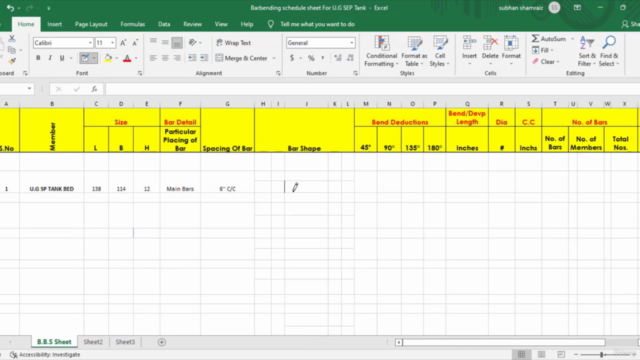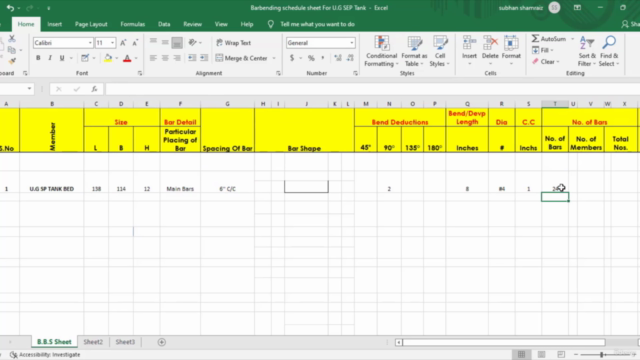G+2 Building Estimation & Quantity Surveying Course.

Why take this course?
It looks like you've provided a comprehensive list of topics and training modules for various aspects of construction, particularly in the context of bar bending schedules, rate analysis, payment methods, and the use of Excel and AutoCAD in a construction setting. Here's a brief overview of how you might approach each topic:
-
Understanding Construction Basics:
- Excavation: Learn about different types of excavation, safety precautions, and methods for measurement and estimation.
- PCC (Precast Concrete Components) Work: Understand the process of casting concrete elements off-site. RCC (Reinforced Concrete Cement) Work: Know how to mix concrete, pour it into forms, and the importance of reinforcement bars.
-
Bar Bending Schedules:
- Learn the purpose of a bar bending schedule in reinforced concrete structures.
- Understand how to measure and calculate the lengths of reinforcement steel (bars) needed for different angles and overlaps.
- Study how to prepare a bar bending schedule using manual calculations or software tools.
-
Rate Analysis:
- Master the principles of cost estimation and rate analysis for various construction tasks.
- Learn how to calculate labor and material costs, overheads, and profit margins.
- Use Excel to create spreadsheets that help in financial planning and decision-making.
-
Payment Methods and Accounting:
- Understand the different payment methods used in the construction industry.
- Learn about cost plus, fixed price, and other contract types.
- Manage project finances using accounting software or Excel.
-
Excel Training for Construction:
- Get familiar with basic Excel functions and formulas that are essential for construction estimating and financial management.
- Learn to create charts and graphs to visualize data and understand trends.
- Practice data analysis, pivot tables, and what-if scenarios.
-
AutoCAD Training for Construction:
- Understand the basics of AutoCAD, including its interface and commands.
- Learn how to draft building plans, calculate areas, and generate material lists.
- Practice with block references, layers, and viewports to efficiently manage large-scale drawings.
-
Specialized Work:
- Brickwork: Understand the techniques and measurements for laying bricks.
- Plastering: Learn about different types of plaster and how to apply them correctly.
- Marble and Tile Work: Get familiar with the installation processes for marble and tiles, including cutting, placement, and finishing techniques.
- Paintwork: Understand the preparation, application, and selection of paint types suitable for various construction surfaces.
-
Working with Retaining Walls and Columns:
- Study the design, formwork, and reinforcement requirements for retaining walls to ensure stability and longevity.
- Learn about different column types (e.g., circular, rectangular) and their respective bending schedules.
-
Concrete Work:
- Understand the preparation, mixing, pouring, and finishing of concrete.
- Learn how to calculate the amount of concrete required for various parts of a construction project.
-
Bar Bending Schedule in Metric Units (Meter and Millimeters):
- Adapt the bar bending schedule process to metric units.
- Ensure all measurements and calculations are consistent with international standards.
Each of these topics requires a dedicated approach to learning, with hands-on practice being key to mastering the skills. It's also important to stay updated with the latest industry standards and technological advancements that can impact construction practices.
Course Gallery




Loading charts...